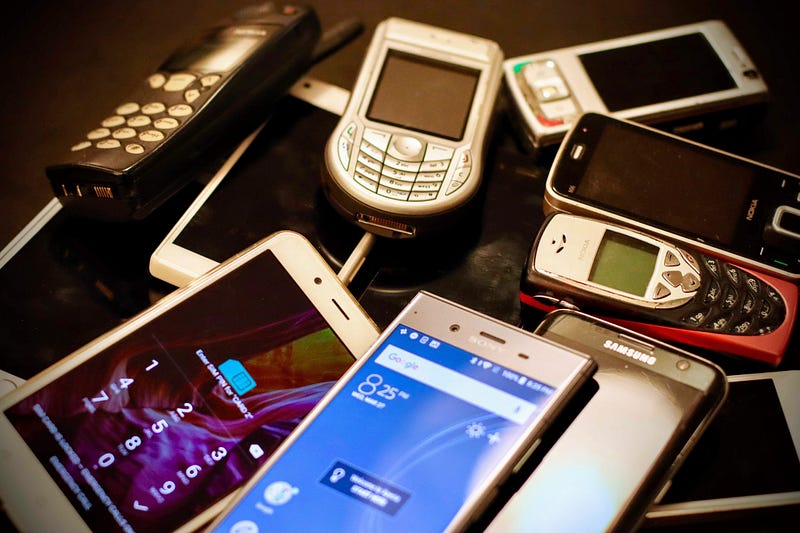Bridging America's Digital Divide: Challenges and Opportunities
Written on
Chapter 1: Understanding the Digital Divide
The concept of the "digital divide" is often associated with developing nations, uneducated populations, and the events of 2020. However, the reality is far more intricate. As an adjunct professor, I observe students striving to complete their degrees using smartphones because they lack access to a laptop, which they cannot afford. For many, purchasing essential software for graphic design courses is a struggle, often leading them to rely on free trials just to scrape by with a passing grade. Despite student discounts, a monthly fee of $9.99 for full access remains a financial burden.
These same students frequently apply for jobs while using unfamiliar software, hoping to learn on the job with their employer footing the bill. This scenario highlights some of the complex aspects of America's digital divide, where individuals navigate a technology-driven world that demands substantial financial resources for continuous updates and new equipment.
The Digital Divide Predates 2020
The pandemic in 2020 forced many into a digital-only existence, amplifying existing inequalities. The divide was stark; nearly 25% of American households lacked a computer, and 20% were without broadband internet. This gap has serious implications for individuals, families, and communities and remains largely unresolved in various states.
Access to technology is only part of the equation; it also involves having the skills to use digital tools, the knowledge to navigate online resources, and the capacity to engage in the digital economy. The gap exists between those who can fully leverage digital technologies and those who cannot.

Chapter 2: The Rural Challenge
The issue is particularly pronounced in rural regions. In 2020, nearly one-third of households lacked broadband access out of 129 million households. According to the FCC, 19 million Americans still lacked fixed broadband access in 2021, and the NTIA reported 14 million without mobile broadband in 2022.
Disparities vary by state; for instance, in Mississippi, 41% of households were without broadband access, the highest percentage nationwide. Other states with significant gaps include Arkansas, Alabama, Oklahoma, and Louisiana. Conversely, Massachusetts had only 4% of households lacking broadband, showcasing a stark contrast.
These disparities did not emerge overnight. For example, policies in Mississippi have historically hindered broadband deployment. In 2004, legislation prohibited municipal governments from offering broadband services, a restriction that wasn’t lifted until 2017. Additional laws further complicated funding and deployment efforts, illustrating how state legislation can create barriers to digital access.

Chapter 3: The Role of Government
The federal government has also contributed to the widening digital divide. The FCC's universal service fund, aimed at subsidizing broadband in low-income and rural areas, has suffered from significant underfunding. In 2022, the fund faced a $9 billion shortfall, leaving only one-third of eligible households receiving subsidies.
For the growing population of students attempting to balance work and online education, this lack of support puts them at a severe disadvantage. Managing both work and studies is challenging enough, but without consistent internet access and necessary devices, the situation becomes even more difficult.
Chapter 4: Infrastructure Challenges
One critical factor in addressing the digital divide is infrastructure. Many rural areas simply lack the necessary infrastructure for broadband access. In some regions, existing infrastructure is outdated and unable to support high-speed internet, which contributes to the FCC's underfunding issues.
To bridge this gap, significant investment in modern broadband networks is essential, ensuring connectivity reaches every corner of the country without delay.
Chapter 5: The Device Dilemma
Accessing the internet requires devices, and many Americans lack either a computer or smartphone, let alone both. A 2017 Pew Research Center study found that about 14% of Americans did not own a smartphone, and 20% lacked a desktop or laptop. This has been an ongoing issue for years.
Chapter 6: Cybersecurity Concerns
The digital divide also encompasses issues of security. Cyberattacks pose risks not only to businesses but also to individuals, with potentially devastating consequences. A 2017 study by the National Cybersecurity Alliance revealed that 60% of small businesses that experienced a cyberattack were forced to close.
Chapter 7: The Impact on Students
As society continues to shift online, the digital divide poses increasing challenges for students lacking adequate support. Research from the Education Trust in 2017 indicated that students without reliable internet access are more likely to face academic difficulties and are less likely to graduate. Furthermore, a 2020 study by the National Education Association revealed that those lacking reliable internet access were more likely to receive lower grades and miss school.
Despite awareness of these issues, progress has been slow. Although nonprofits and advocacy groups strive to raise awareness and funds, it still falls short of what is needed.
In January 2021, the Biden administration announced a plan to address the digital divide, proposing a $100 billion investment in broadband infrastructure and $50 billion for devices and software. The plan also aims to enhance internet access for low-income households and provide training for those in need.
But is this enough, and how quickly will these funds be allocated to those who need to build the infrastructure? The urgency is clear; my students need assistance now.
In a candid conversation, President Trump addresses the challenges and strategies surrounding America's digital divide, emphasizing the need for immediate action.